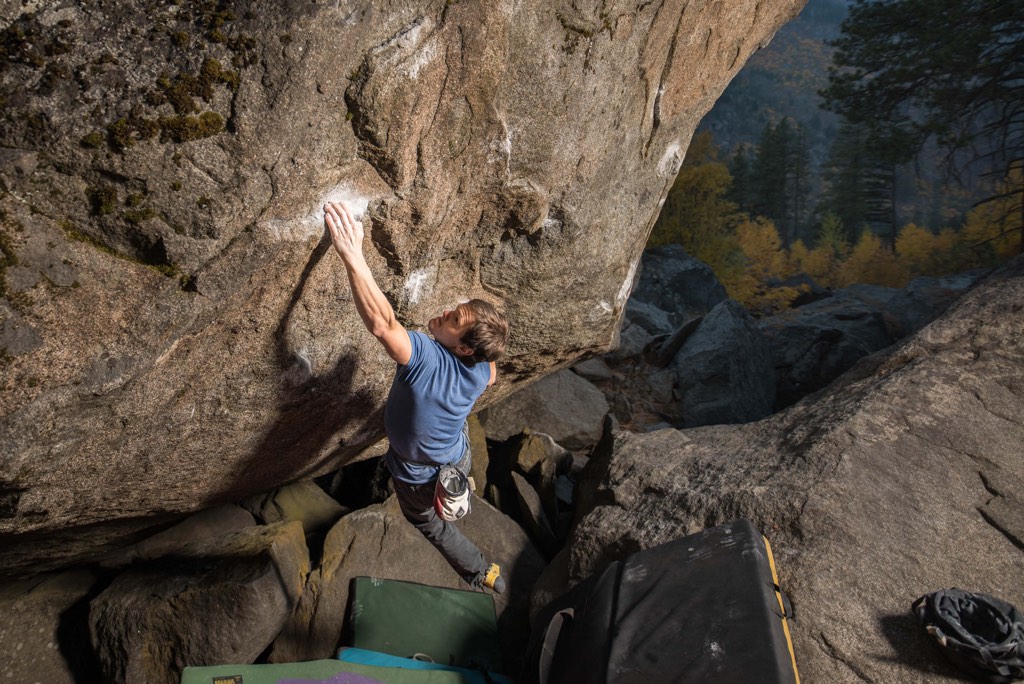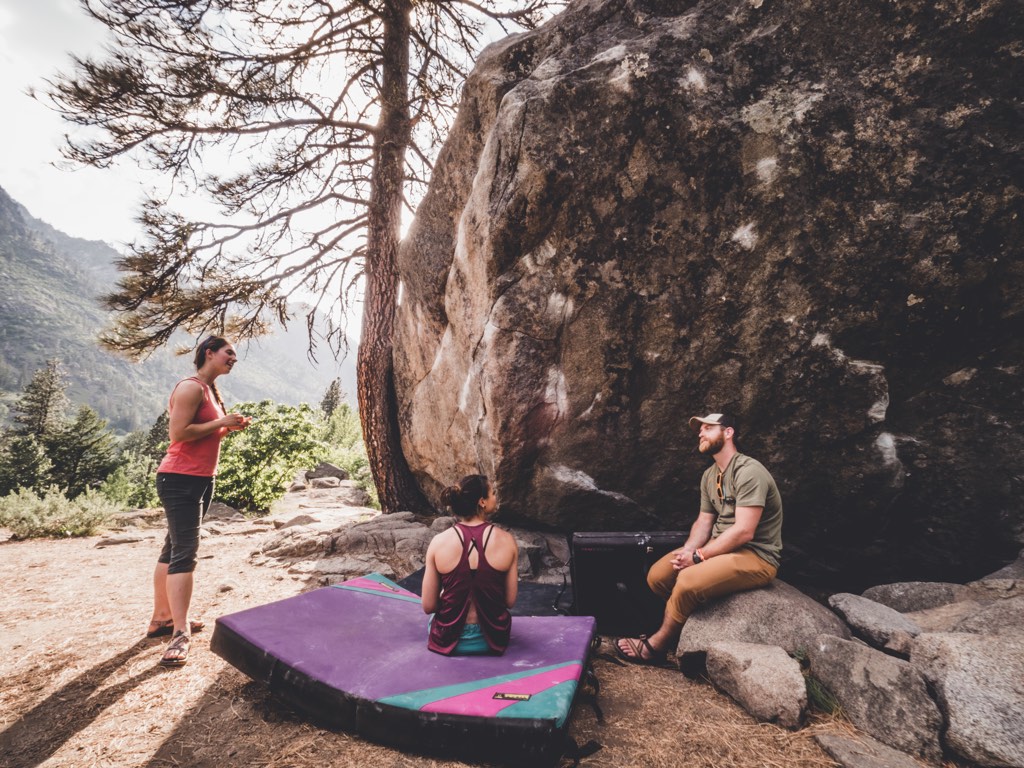Most of us have felt that urge at the climbing gym or at the crag—the little voice that says, “Just one more route!” It’s the feeling we should dig deeper to try one more climb or one higher grade, until we’re so fatigued our hands literally can’t hold a grip and we start falling out of sheer exhaustion. It can be frustrating or satisfying, depending how you look at it. “Many of us have been indoctrinated into the myth that fatigue is the hallmark of a good workout,” said Kris Hampton, climbing coach, podcaster and owner of Power Company Climbing. “The easy answer is to do one more pitch, get really tired and go home feeling like you really got something done.” But if the goal is to build skills and become better a better climber, Hampton says this strategy is actually more harmful than helpful.
We asked Hampton what it does to the body to “max out” during every climbing session—and what to do differently in order to make more efficient progress. Here’s what he said.

It might seem counterintuitive to keep yourself from climbing to the point of fatigue—but it might save you from developing bad habits and injuries.
Pushing to the point of fatigue every workout opens you up to injury.
The level of fatigue you build by always going as hard as you can takes much longer to recover from, Hampton said. “Three or four of that session in a row and you’re much more likely to end up sick or injured, as well as with drastically reduced performance.”
It also reinforces bad habits and is a good way to get frustrated.
Your skills degrade as you fatigue, Hampton explained. “If you [climb to the point of] failure every session, as your footwork falls apart and you lose all body tension while lunging to holds, you’re strengthening the neural pathways that recognize that behavior as an acceptable way to climb.”
“In my experience, it’s a vicious psychological cycle,” Hampton said. Because you’re fatigued, your climbing suffers—which can make you feel disappointed. Which can push you to go even harder, closing the loop of exhaustion, when more rest is actually the better solution, according to Hampton.

Resting might be as important as trying hard, according to climbing coach Kris Hampton.
A better way to improve: Pay more attention to subtle markers—and less attention to grades.
Focusing on the quality of training—instead of shooting for constant intensity—takes more attention to detail, but can make a bigger difference in the long run. This is especially true because it requires looking past climbing grades. “If that is the only measure used to determine progression, it quickly becomes a slippery slope,” Hampton said. Grades are ultimately subjective, and when you’re only measuring yourself against numbers, it can be easy to feel stuck on a plateau. “It’s important to be able to point to the more subtle progression, and the patterns in your climbing that either support or inhibit that progression,” he said.
How to do that? Start a journal.
“The only way I know to do that is to keep notes about the subjective parts of your experience,” Hampton said. Consider investing in a mindfulness journal, like the ones Hampton has developed and sells on his website. They contain prompts that Hampton has found most useful for teasing out patterns and habits. “But it doesn’t have to be that in-depth to begin with,” he says. “Keep track of your sleep, how you feel before, during and after a session, and your intentions for each session. Did you meet those intentions or get sidetracked? Why? How can you improve on that for the next session?” The most important thing is to notice patterns.
Learn to discern when it’s actually time to push yourself to the limit—and how to do it.
In your day-to-day training, it’s more beneficial to learn how to climb at what Hampton calls near-maximum effort. “For instance, if you’ve done 54 moderately difficult moves in a row, you’re likely pushing near your limit, and may find it hard to continue,” he said. “But no single move has required anything near maximum effort.” This is the kind of effort Hampton recommends for 80 percent of training sessions—more of a sustainable slow burn. As far as frequency, he recommends climbing as little as possible without sacrificing session quality. “While that’s a tough thing to gauge, if we’re being honest with ourselves we know when our output has dropped,” he said. “This usually comes after an exhausting workout. Those are times when you need to rest.” While you might see some pros climbing five or six says a week, he explained, if you look closely at their workouts, time spent resting far outweighs time spent climbing.
However, there certainly is a time and a place to go all-out, he said. “The ability to push to the limit—that desperate, can-barely-hang-on-but-still-climbing, should-have-fallen-six-moves-ago effort—needs to be learned,” Hampton said. It might not be super helpful in everyday training, but it’s certainly essential for performance. They key is to learn the difference between the two types of effort and when to employ each of them.
